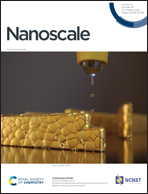Mechanoelectrochemical issues involved in current lithium-ion batteries
Abstract
The volume change and concurrent stress evolution of electrode materials during the cycling of lithium-ion batteries can cause severe mechanical issues such as the fracture of active materials and electrodes, thus leading to safety issues and capacity fading. Recent years have witnessed a thriving interest to gain a complete understanding of battery electrode materials from the viewpoint of mechanics. This review paper aims at discussing battery electrode materials from a mechanical perspective to provide an overview of the recent innovative efforts in this field. On the one hand, we introduce the mechanical issues of active materials and electrodes in the electrochemical processes, along with a focus on the strategies developed for enhancing the mechanical strength of electrode materials and constructing mechanically robust electrodes. On the other hand, experimental and theoretical studies on the stress-regulated effects on electrochemical processes are discussed to demonstrate the intriguing role of mechanical stress as an enabler in electrochemistry. We also give an outlook on the promising research topics for understanding the material mechanical issues, reinforcing electrode materials and improving battery performance.

- This article is part of the themed collection: Recent Review Articles


 Please wait while we load your content...
Please wait while we load your content...